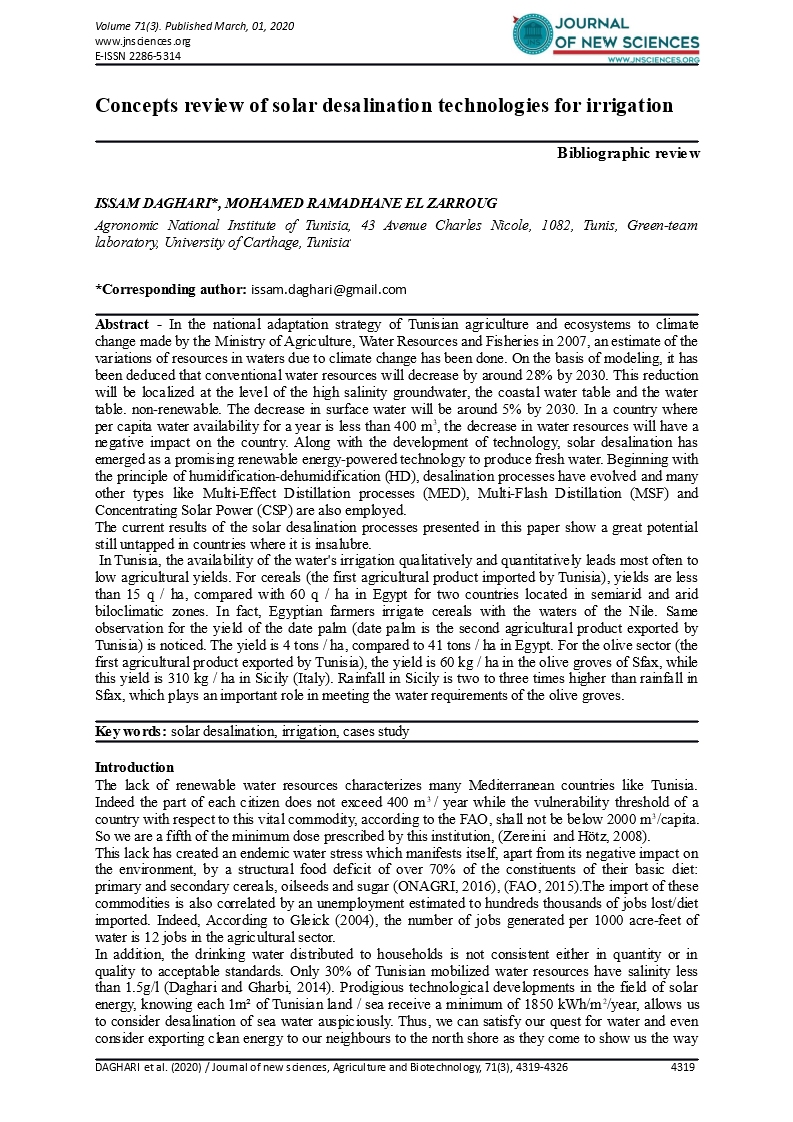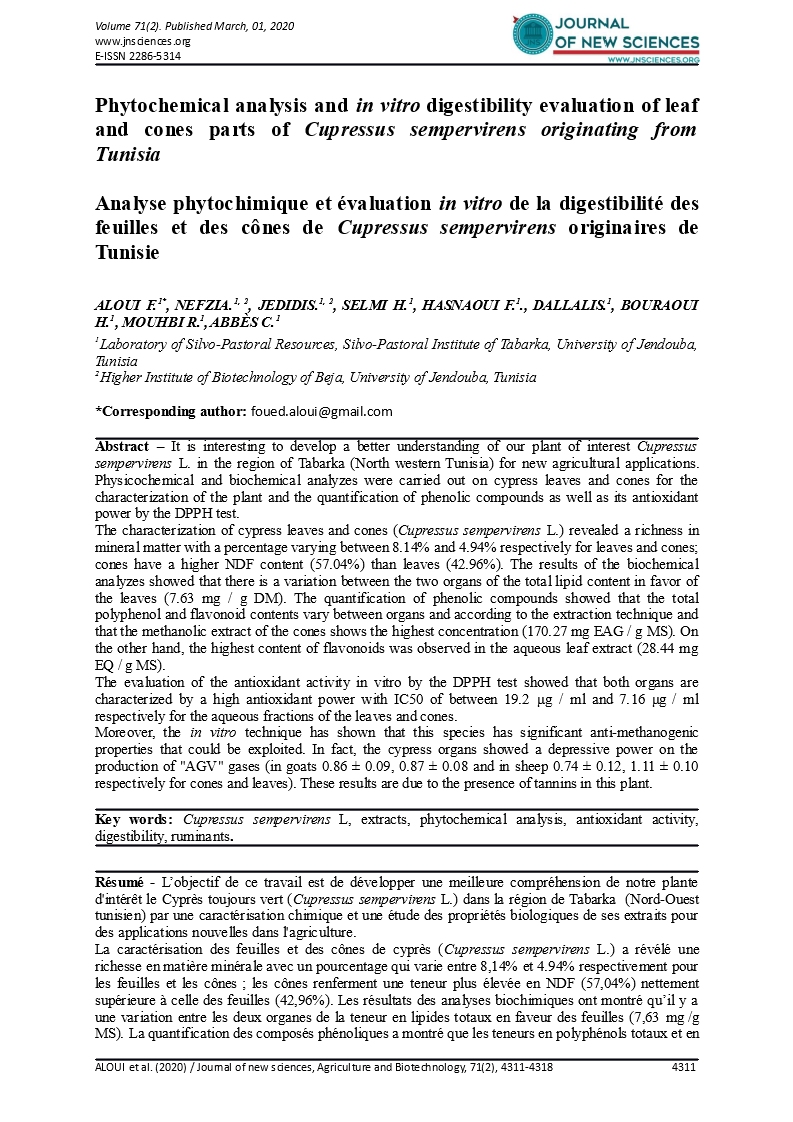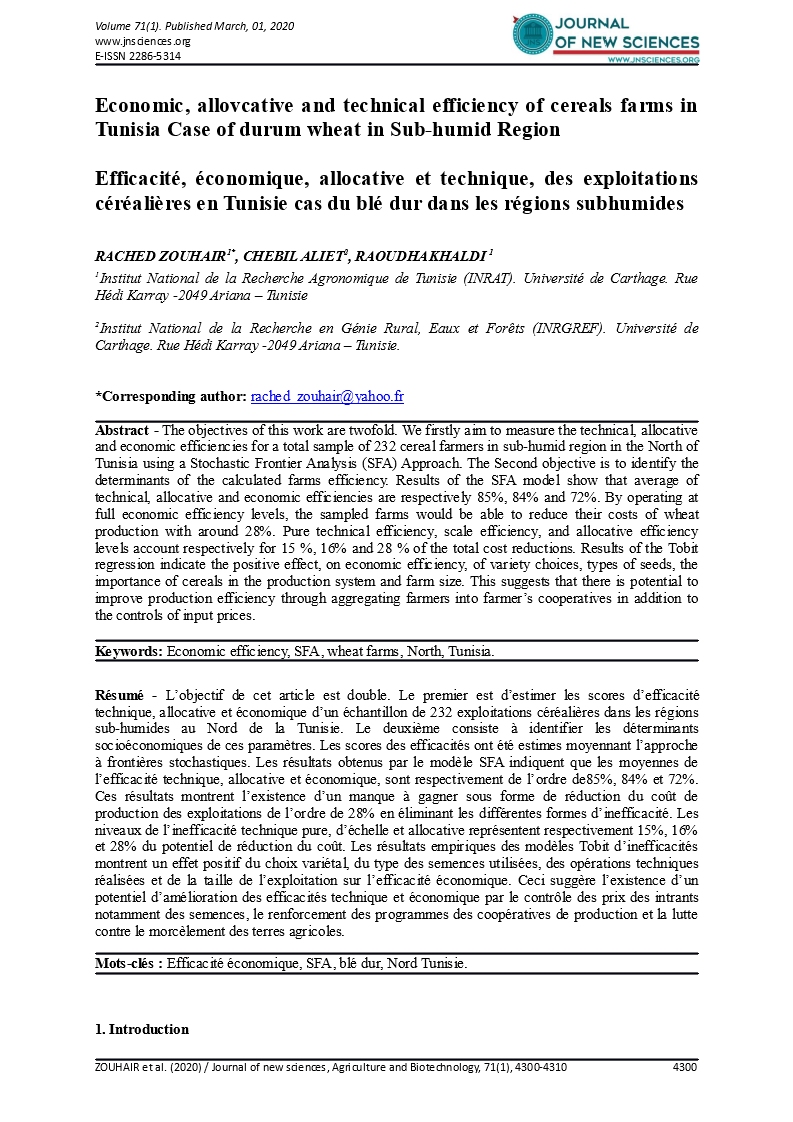- Category: Volume 71
- Hits: 6441
Concepts review of solar desalination technologies for irrigation

Bibliographic review
ISSAM DAGHARI
MOHAMED RAMADHANE EL ZARROUG
Agronomic National Institute of Tunisia, 43 Avenue Charles Nicole, 1082, Tunis, Green-team laboratory, University of Carthage, Tunisia,
Abstract - In the national adaptation strategy of Tunisian agriculture and ecosystems to climate change made by the Ministry of Agriculture, Water Resources and Fisheries in 2007, an estimate of the variations of resources in waters due to climate change has been done. On the basis of modeling, it has been deduced that conventional water resources will decrease by around 28% by 2030. This reduction will be localized at the level of the high salinity groundwater, the coastal water table and the water table. non-renewable. The decrease in surface water will be around 5% by 2030. In a country where per capita water availability for a year is less than 400 m3, the decrease in water resources will have a negative impact on the country. Along with the development of technology, solar desalination has emerged as a promising renewable energy-powered technology to produce fresh water. Beginning with the principle of humidification-dehumidification (HD), desalination processes have evolved and many other types like Multi-Effect Distillation processes (MED), Multi-Flash Distillation (MSF) and Concentrating Solar Power (CSP) are also employed. The current results of the solar desalination processes presented in this paper show a great potential still untapped in countries where it is insalubre. In Tunisia, the availability of the water's irrigation qualitatively and quantitatively leads most often to low agricultural yields. For cereals (the first agricultural product imported by Tunisia), yields are less than 15 q / ha, compared with 60 q / ha in Egypt for two countries located in semiarid and arid biloclimatic zones. In fact, Egyptian farmers irrigate cereals with the waters of the Nile. Same observation for the yield of the date palm (date palm is the second agricultural product exported by Tunisia) is noticed. The yield is 4 tons / ha, compared to 41 tons / ha in Egypt. For the olive sector (the first agricultural product exported by Tunisia), the yield is 60 kg / ha in the olive groves of Sfax, while this yield is 310 kg / ha in Sicily (Italy). Rainfall in Sicily is two to three times higher than rainfall in Sfax, which plays an important role in meeting the water requirements of the olive groves.
Key words: solar desalination, irrigation, cases study


